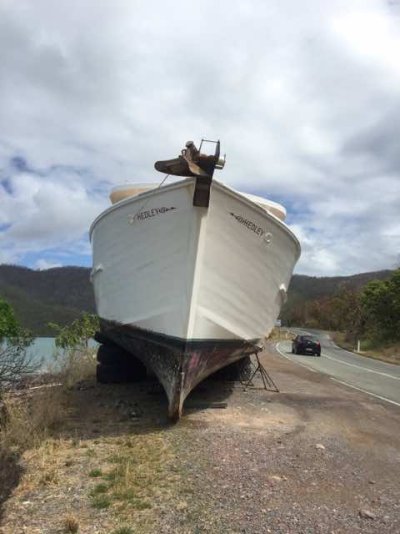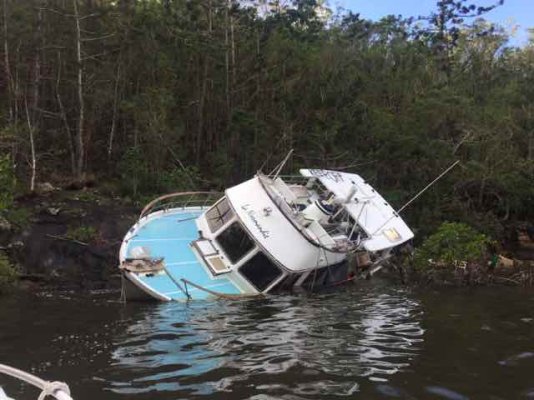Hickers
Senior Member
Having just experienced cyclone Debbie with its 24 hours of 150 knot plus winds and inspecting damaged boats in the aftermath I suggest:
No short ropes, anywhere, not enough stretch.
Do not use non stretch rope, it's very hard on bollards, cleats and the pontoon.
Rope to every available cleat and bollard inc across walkways
Don't rely on one rope on any point, double or triple them.
Run ropes to the marina pillars to keep as much load off the fingers as possible
Position the boat as far away from the pontoons as you can.
Rope to the main jetty to spread bollard load
Do not use rope more than 2 years old, it breaks.
Attach fenders to the jetty where you can as they blow up onto the jetty.
Secure your neighbors vessel if needed, vessels here were sunk by their neighbours!
Remove rear canopy, clears and shadecloth covers
Remove aerials and wipers
Take off tender covers and remove any loose contents
Tape up all doors and hatches and anything else not firmly attached
Remove the power cord
Remove all cushions
Be heavy with diesel, fresh water and supplies
Inside prep the boat as you would for heavy weather
Clean bilges and check auto bilge pump switches, it's amazing how much water gets inside a boat in 100 knots plus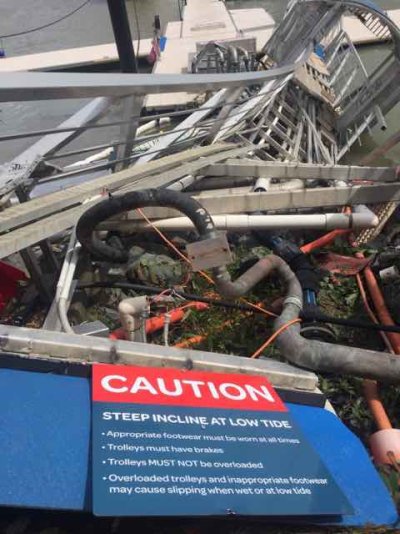
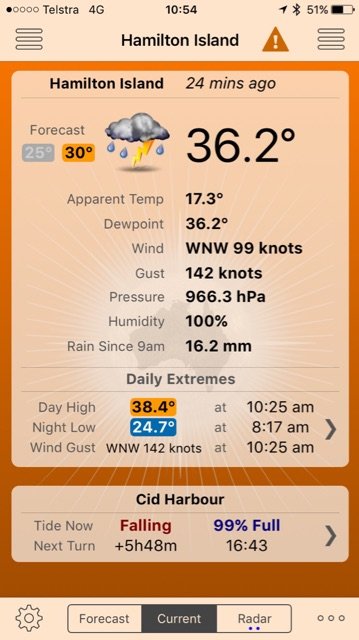
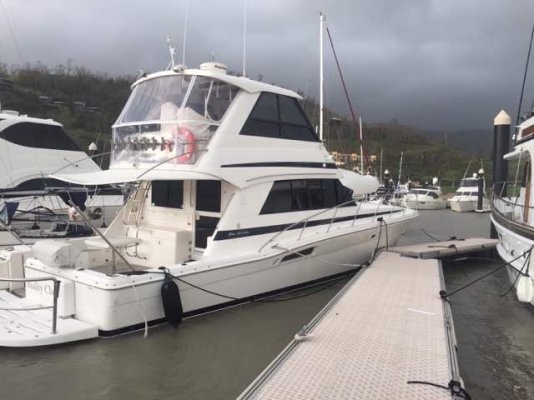
Most badly damaged boats here were brought down by pontoon failure, their neighbors or snapped ropes. You have to keep shock loads as low as possible to reduce the chance of the marina breaking up
Others were badly beaten by flailing shade and canopy supports, take them off!
There may be no power or water for days afterwards, be prepared.
Finally if you need fenders or rope buy it early before it's all gone!!
My first cyclone, Bluechip survived but I'd prefer not to experience that again! — at R Marine Crawley Abell Point Marina Airlie Beach QLD
No short ropes, anywhere, not enough stretch.
Do not use non stretch rope, it's very hard on bollards, cleats and the pontoon.
Rope to every available cleat and bollard inc across walkways
Don't rely on one rope on any point, double or triple them.
Run ropes to the marina pillars to keep as much load off the fingers as possible
Position the boat as far away from the pontoons as you can.
Rope to the main jetty to spread bollard load
Do not use rope more than 2 years old, it breaks.
Attach fenders to the jetty where you can as they blow up onto the jetty.
Secure your neighbors vessel if needed, vessels here were sunk by their neighbours!
Remove rear canopy, clears and shadecloth covers
Remove aerials and wipers
Take off tender covers and remove any loose contents
Tape up all doors and hatches and anything else not firmly attached
Remove the power cord
Remove all cushions
Be heavy with diesel, fresh water and supplies
Inside prep the boat as you would for heavy weather
Clean bilges and check auto bilge pump switches, it's amazing how much water gets inside a boat in 100 knots plus



Most badly damaged boats here were brought down by pontoon failure, their neighbors or snapped ropes. You have to keep shock loads as low as possible to reduce the chance of the marina breaking up
Others were badly beaten by flailing shade and canopy supports, take them off!
There may be no power or water for days afterwards, be prepared.
Finally if you need fenders or rope buy it early before it's all gone!!
My first cyclone, Bluechip survived but I'd prefer not to experience that again! — at R Marine Crawley Abell Point Marina Airlie Beach QLD

